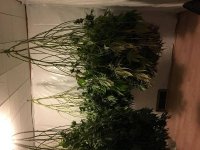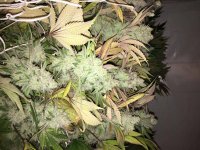My plan is to run Jacks however, I am still interested in and eyeing Ionic (its pretty cheap and seems easy)... Do you use all the ionic amendments too? Im interested in your harvest results...
I only run the ionic bases. With ionic boost and monster bloom in flowering. I run a 4 week veg. I have to use cal/mag in veg. I average .7-1.0 gpw strain depending. I run 2 plants per light. Traditional 1000 watt hps.




